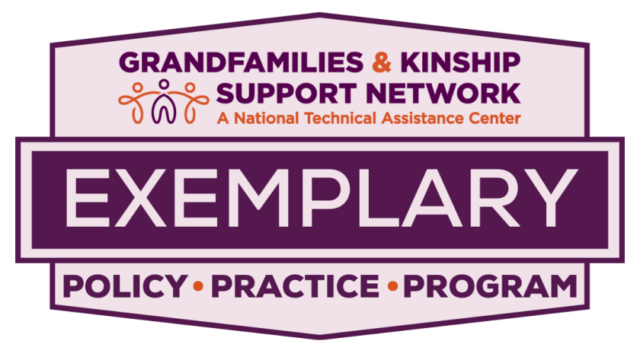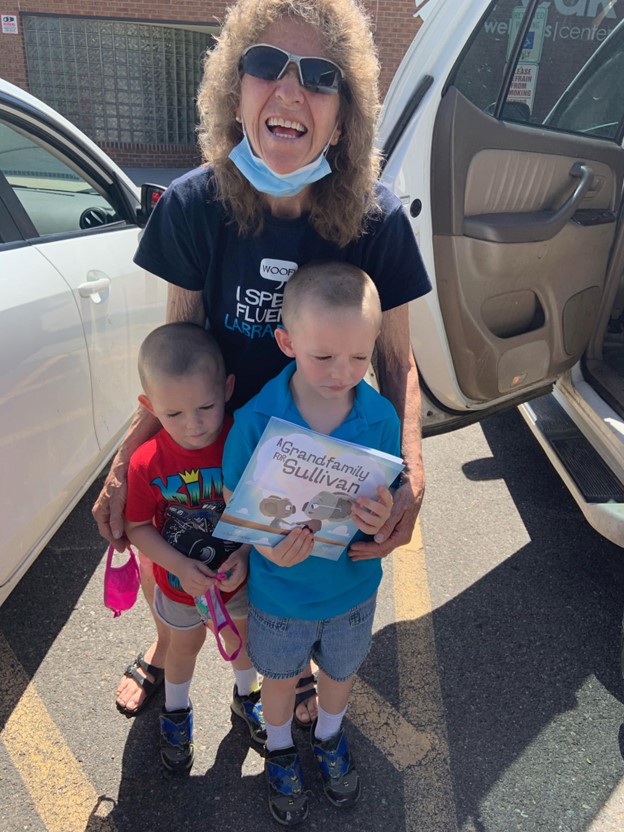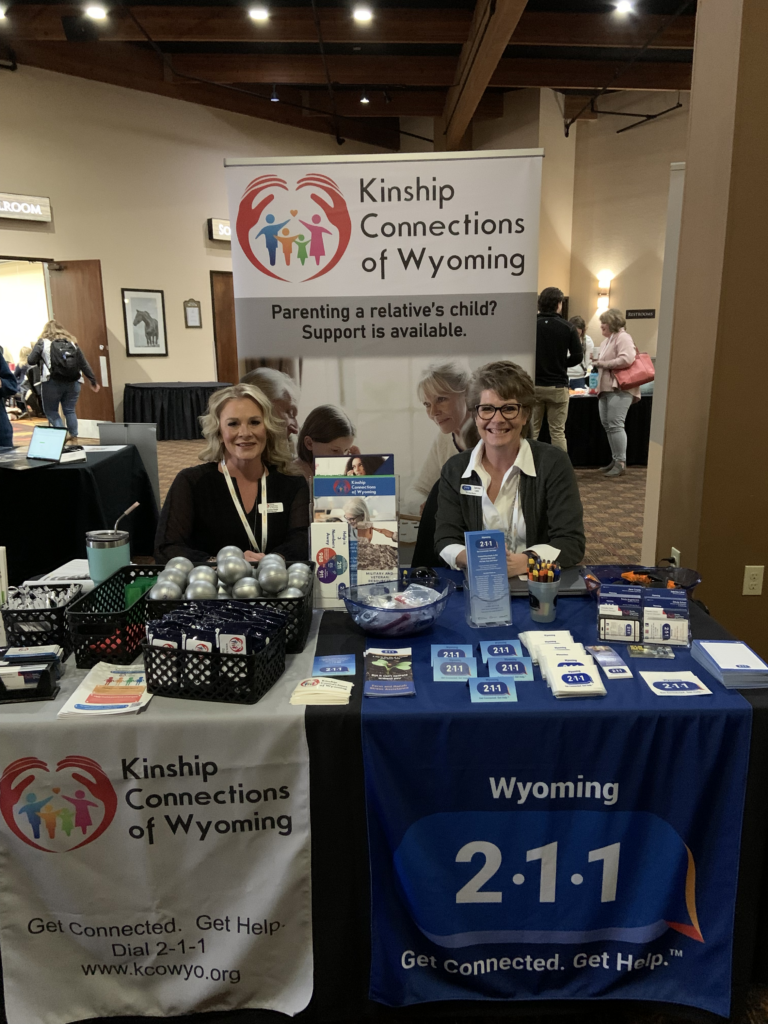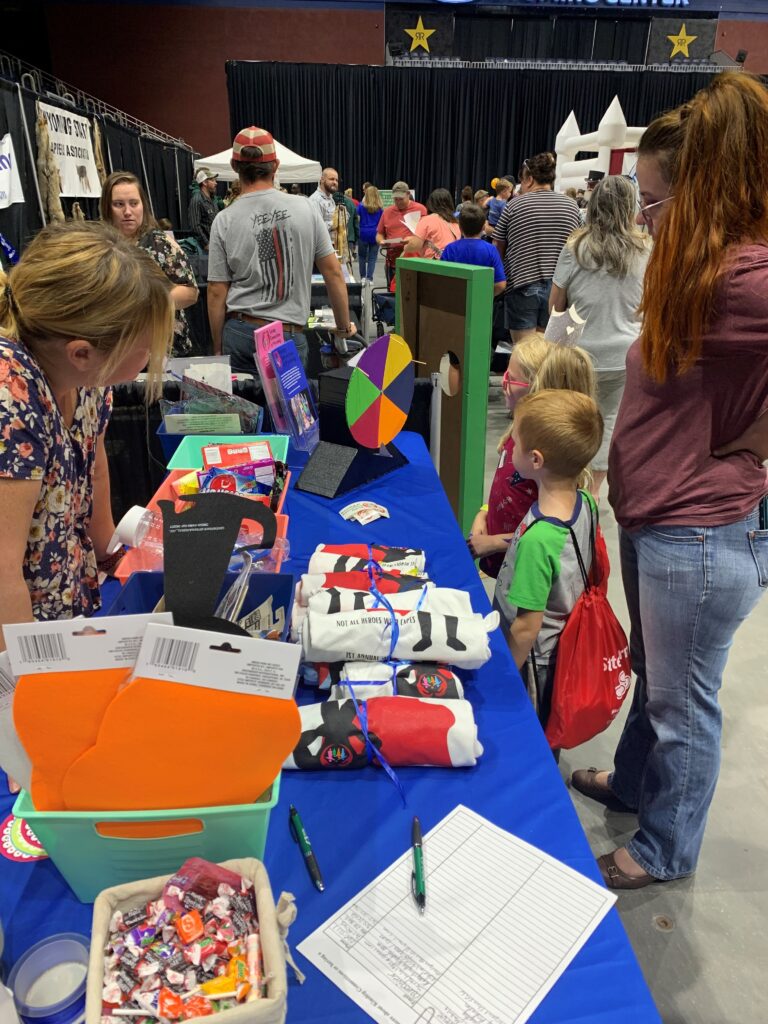Exemplary Programs
Montana Kinship Navigator Program and Kinship Connections of Wyoming
Download This Resource
The Montana Kinship Navigator Program and Kinship Connections of Wyoming provide kin caregivers with information and referrals to services and resources, such as financial assistance, legal services, counseling support, childcare, and educational resources. The programs also provide advocacy support to caregivers to help them navigate the kin caregiving experience.
What makes the Montana Kinship Navigator Program and Kinship Connections of Wyoming unique is that they have partnered to form the first dual-state kinship evaluation collaboration to conduct and coordinate a formal program evaluation. In so doing, they have to overcome the barriers inherent in conducting a program evaluation in a rural state. The programs’ ability to effectively develop and navigate a collaborative process that builds on their individual capacities to serve kinship families is why the Montana Kinship Navigator Program and Kinship Connections of Wyoming have earned the Exemplary Kinship Program designation from the Grandfamilies & Kinship Support Network.
The collaborative effort makes sense for two rural states that have similar population demographics and an insufficient amount of kin caregiver data for a formal evaluation on their own. By combining their caregiver data sets, they will have sufficient data to conduct a program evaluation. In addition to combining deidentified caregiver data through data-sharing agreements, their collaborative approach includes combining workflow processes, procedures, and forms; focus groups; and some of their caregiver education and support groups.
The evaluation partnership in Montana and Wyoming formed as a result of the programs’ individual engagement in the national Kinship Navigator Collaborative (KNC). Supported by Generations United, Casey Family Programs, and the University of Washington, which is conducting the evaluation, the KNC fosters a collaborative approach to developing a trauma-informed, evidence-based, and replicable kinship navigator model. One of the goals of the collaborative is to develop and implement a model that meets all the evidence-based standards and procedures for kinship navigation as defined by the Title IV-E Prevention Services Clearinghouse, developed in accordance with the Family First Prevention Services Act (FFPSA).
For the purposes of the evaluation, and in alignment with the KNC model and the criteria established by the Title IV-E Prevention Services Clearinghouse, both Montana and Wyoming have created two groups of caregivers, an Information and Referral Group and a Case Management Group. These two groups are being compared in the areas of placement stability, caregiver well-being, access to services, and overall success.
Montana Kinship Navigator Program
The Montana Kinship Navigator program began as a statewide program in 2002. It serves kinship/grandfamilies across the state of Montana and provides information and referral services that link families to resources in their own communities. In some counties, case management services are also provided. The program is delivered by and housed at the Montana State University Extension, which is one of over 200 land-grant colleges and universities across the nation that teach, conduct research, and provide resources to address public needs and challenges. Montana’s county extensions facilitate some of the caregiver support groups in their communities while the navigators link the families to resources, benefits programs, and concrete goods.

Kinship Connections of Wyoming
Kinship Connections of Wyoming began in 2019 as a pilot program in Laramie and Natrona counties. Modeled after the Kinship Navigator Program in Arizona, the program, now statewide, is funded by the Wyoming Department of Family Services and operated in partnership between Wyoming 2-1-1 and the Wyoming Citizen Review Panel. Wyoming 2-1-1 serves as the program’s fiscal agent. The program provides information and referral services across the state and provides case management services in certain counties. Guidance for families seeking guardianship is also provided by the program. The program’s website has a resource library that contains kinship information and data, a list of community resources, and forms commonly used in the program.
Eligibility for Services and Intake
Kin caregivers 18 years of age and older can access the services provided by each program, regardless of their income or child welfare agency involvement.
Service Population
The two programs support families in rural, urban, and tribal areas. The majority of the caregivers in Montana and Wyoming are white and over the age of 50. Seventy-two percent of Wyoming’s kin caregivers are grandparents or great-grandparents. The tables below illustrate the number of caregivers served and the racial/ethnic profile of caregivers enrolled in the evaluation through 2023.
| Montana Kinship Navigator Program | Kinship Connections of Wyoming | |
| TOTAL PARTICIPANTS IN 2023 | 46 | 59 |
| Participants in Case Management Evaluation Group in 2023 | 26 | 38 |
| Participants in Information and Referral Evaluation Group in 2023 | 20 | 21 |
| TOTAL PARTICIPANTS IN 2022 | 36 | 46 |
| Participants in Case Management Evaluation Group in 2022 | 23 | 28 |
| Participants in Information and Referral Evaluation Group in 2022 | 13 | 18 |
| Montana Kinship Navigator Program | Kinship Connections of Wyoming | |
| White | 45% | 82% |
| American Indian | 38% | 8% |
| Hispanic | 5% | 16% |
| Black | 1% | 4% |
| Asian | 0% | 1% |
| Two or more races | 11% | 2% |
Services
For both programs, the types of services that kin caregivers receive depend on their county of residence. Under the program evaluation, there are “control group” counties and “case” counties. Caregivers in the “control group” counties receive information and referral services, peer support through support groups, advocacy support, and emergency funds. Families in the “case” counties receive the same services as those in the control group but they are supplemented with case management services and enhanced caregiver education. The provision of case management services begins with a kinship family needs assessment. The program then works with families to set goals and provides a more hands-on approach to assisting the caregiver with obtaining the resources they need and attaining their established goals.
“I can’t tell you enough how incredible it feels in this moment to have an advocate in our corner helping us navigate all of this.
Kin Caregiver
Staff
The Montana program is staffed by one full-time program manager/navigator and two part-time student interns. The Wyoming program is staffed by two full-time kinship navigators, one of whom is also the program manager. Wyoming 2-1-1 provides information and referral services.
She [my kinship navigator] paved the way for getting the help that I didn’t think was possible.
Kin Caregiver
Key Partners
Both programs place significant value on their partnerships. Oversight advisory committees were established in each state to formalize partnerships and promote cross-system collaboration amongst public agencies and non-profit organizations. The monthly oversight meetings help facilitate collaboration in real time. Partnering with aging organizations, university extensions, school districts, family resource centers, government agencies, respite organizations, and faith-based and community-based organizations has been helpful to coordinate service delivery and wrap services around the caregivers.
Program partners have shared that collaboration across systems has ignited their energy to serve families, and they have expressed appreciation for being engaged in implementing innovative solutions to address family challenges. They consider the partnership between the two navigator programs to be unique, innovative, and a model for replication in other jurisdictions across the country.
The two programs have also benefitted from their collaboration with the national Kinship Navigator Collaborative. Through this partnership, they have developed standardized forms and processes, shared tools and strategies, and built efficiencies in their programs.
Caregiver Engagement
The programs administer a needs assessment to caregivers receiving case management services, and they use data from the assessments for program development and to tailor services to the needs of the families. Some kin caregivers are members of the advisory council for their state, where they help shape policies and inform programmatic decision-making. Some caregivers also provide peer support by serving as support group leaders.
“Some of the most impactful change I have seen is when you have that strong grandparent leading the way. They know where to get connected because they have lived through this.
Partner
Outreach to Families
Like many programs, the programs note that outreach is a challenge. They find that face-to-face interactions and word of mouth are the most effective outreach strategies.
In Montana, Child Protection Services is one of the program’s greatest referral sources, providing approximately 50% of the referrals to the program. Individuals in the communities, such as school social workers, are key outreach partners as well.
The Wyoming program reaches families through referrals from 2-1-1, the Department of Family Services, and schools. They find in-person grassroots community outreach to be the most successful strategy for reaching families. The program has information tables at community and school events and at teacher, social worker, aging, and child welfare conferences across the state. When possible, they use these venues to conduct presentations about the program and its services.

Funding and Sustainability
The Montana program is funded solely by Family First Prevention Services funds through title IV-B. The Wyoming program receives the same funding and supplements it by hosting fundraising events and soliciting private donations. Wyoming 2-1-1 also provides in-kind services. The goal for both programs is to submit their kinship navigator programs, in collaboration with the KNC initiative, to the Title IV-E Prevention Services Clearinghouse. If they receive a “promising,” “supported,” or “well-supported” rating from the Clearinghouse, they will qualify for ongoing 50% federal reimbursement of all program costs.
Demonstrating Success and Continuing Quality Improvement
Both programs obtain caregiver feedback through one-to-one conversations, program surveys, and pre-/post-evaluations for caregiver education programming. Program staff members review the data and use it for program improvement. Qualitatively, determining success is unique to each caregiver based on their goals and specific needs. For families that receive needs assessments and goal establishment support through case management, the program evaluates the extent to which their goals are met/completed.
The data is analyzed based on if the goals were met, partially met, unmet, no longer relevant, or unable to be met. The “no longer relevant” and “unable to be met” categories typically signify circumstances such as the child leaving the home, turning 18 years of age, or being unable to obtain a driver’s license without a parent’s signature. Recent data indicated that nearly 75% of caregivers’ goals were met or partially met. Ongoing data review identifies the barriers to goal completion and action is taken to remove those barriers whenever possible.

Challenges and Areas for Program Improvement and Growth
Both programs have geographic challenges given that they are located in states that are largely comprised of rural communities and remote tribal lands. This creates barriers for many families to access resources, services, and support groups. For example, oftentimes families need to drive long distances to get the children medical care or to help them participate in extracurricular activities. With the financial burdens of caring for children unexpectedly and the high cost of gas, even regular responsibilities such as these can be difficult to carry out. Whenever possible, the programs provide gas cards, which are considered a lifeline for some caregivers who are trying to meet a child’s basic needs.
Some caregivers who are receiving case management services and have required training have a difficult time completing the educational sessions due to a lack of time, technology barriers, and/or “screen burnout.” The programs are working toward providing educational opportunities through in-person support groups, which may be more engaging for caregivers and where childcare can be provided.
The programs also experience the challenge of building awareness of their kinship navigator programs and the services they provide to caregivers. Many of these families do not identify themselves as kinship families and do not know that help is available to them or where to go for it. Program staff members continue to attend community events and nurture state-wide partnerships, including with county extensions, to connect caregivers with more services and resources in their communities.
Gaps in services, identified by staff and caregivers of both programs, include respite care and grief and loss counseling for the children. Like in many states, access to mental health services, especially in rural communities, is a challenge.
Lessons Learned
Each program separately shared lessons learned, and there were several common suggestions that are worth noting:
- Develop a systematic approach to assessment, caregiver goal setting, and consistent follow-up, as these protocols generate positive outcomes for kinship families.
- Having system and community partners and caregivers who are excited about the kinship program is critical for success. They are your best ambassadors who can help with outreach and support service provision, so make sure they are equipped with the information and resources they need to promote your program.
- Understand the importance of conducting face-to-face outreach whenever possible because it does make a difference in informing the community about the strengths and needs of kin caregivers and introducing your program to caregivers and potential referral sources.
- Form a partnership between your kinship navigator program and your state’s 2-1-1 program; it is critical to linking families to services and getting families referred to your program.
- If you plan to conduct a program evaluation, conduct due diligence to identify an accomplished evaluator, preferably with knowledge of kinship programming.
- Training and supporting caregivers to become advocates for themselves is a smart investment in time and resources over the long run.
- Consider the changing demographics in your state. The Montana program noted that, because of COVID, they are serving younger caregivers who have different needs than grandparents who are raising grandchildren. They want to interact differently with the program, and you may need to adapt service delivery accordingly.
Additional Program Resources
- Montana Kinship Navigator Program Website
- Kinship Connections of Wyoming Website
- Permission to Contact Form
- Kinship Navigator Collaborative Program Client Survey
- Kinship Navigator Collaborative Intake Packet
- Kinship Navigator Collaborative Family Needs Assessment
- Kinship Navigator Fidelity Monitoring Form for Case Management Group
- Kinship Navigator Fidelity Monitoring Form for Information & Referral Group
- Kinship Navigator Collaborative Goal Setting for Solution-Focused Case Management
Learn More about the Network’s Exemplary Designation
Network staff, along with staff of a partner organization, participated in site visits to both of these programs and are available to answer questions based on this summary. Please complete this short form and we will get back to you.
For information about the steps and criteria of the exemplary designation process, please click here.
